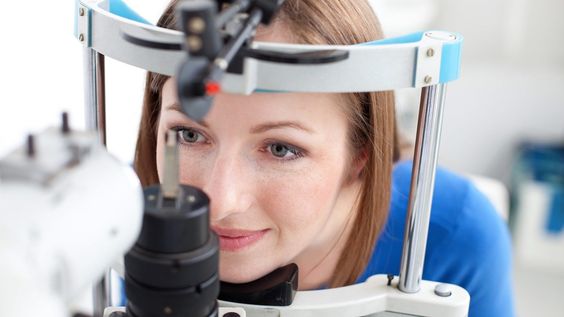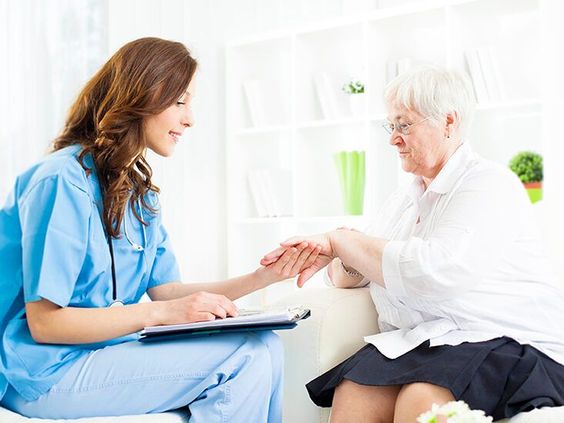Eshealthtips.com – Because the eyes are made of collagen, any disease that affects collagen, such as rheumatoid arthritis, can also affect the eye. Symptoms that affect the eyes can include dryness, redness, and blurred vision.
Early Detection and Treatment can Help Prevent Permanent Damage
People with RA should have annual dilated eye exams and let their rheumatologist or eye doctor know of any new symptoms as soon as possible. Early detection and treatment can help prevent permanent damage. Rheumatoid arthritis (RA) sometimes affects other parts of the body, including the eyes.
The most common eye problem in RA patients is dry eye syndrome (keratoconjunctivitis sicca). RA inflammation causes abnormalities in the tear glands, significantly decreasing fluid secretion. People with RA also often have Sjogren’s syndrome, another autoimmune disorder that leads to dry eyes. If left untreated, dry eyes can damage the cornea — the clear dome-shaped part of the eye that helps you focus on things — and lead to blurry vision.
 Other causes of dry eye include aging, hormonal changes during pregnancy and menopause, and some medications such as antihistamines, decongestants, blood pressure medicines, and anxiety drugs. You can find relief with over-the-counter and prescription treatments, such as eye drops and ointments that contain steroids. Your rheumatologist can help you determine which treatment is right for your condition. He or she may refer you to an ophthalmologist, a doctor who specializes in treating eye diseases.
Other causes of dry eye include aging, hormonal changes during pregnancy and menopause, and some medications such as antihistamines, decongestants, blood pressure medicines, and anxiety drugs. You can find relief with over-the-counter and prescription treatments, such as eye drops and ointments that contain steroids. Your rheumatologist can help you determine which treatment is right for your condition. He or she may refer you to an ophthalmologist, a doctor who specializes in treating eye diseases.
Inflammation that Attacks the Joints Can Damage the Eyes
Inflammation that affects joints can also damage the eye, especially when it occurs in the middle layer of the eye called the uvea. People with rheumatoid arthritis, psoriatic arthritis, and ankylosing spondylitis are at higher risk of developing this condition. The uvea is made up of the iris, ciliary body, and choroid. When inflammation of the uvea occurs, it can cause blurred vision, eye pain, and redness of the conjunctiva. It can also lead to light sensitivity and the appearance of floating black spots (floaters).
Uveitis is diagnosed based on symptoms and an examination. Your doctor may use a tool called a slit lamp to examine the inside of your eye. In addition, blood tests and X-rays might be done to determine the cause of the uveitis. Inflammation from RA often leads to eye problems like glaucoma. This happens when fluid in the eye doesn’t drain as it should. The pressure builds and damages the optic nerve over time, causing vision loss. The condition is called glaucoma, and it’s one of the leading causes of blindness in adults.
 Symptoms of glaucoma include blurred vision, headaches, and halos around lights (or light sensitivity). Your doctor may prescribe medication to reduce the pressure in your eyes, or surgery. Surgery options can include opening a drainage flap in your eye, inserting a drainage valve, or destroying the tissue that creates fluid in your eye.
Symptoms of glaucoma include blurred vision, headaches, and halos around lights (or light sensitivity). Your doctor may prescribe medication to reduce the pressure in your eyes, or surgery. Surgery options can include opening a drainage flap in your eye, inserting a drainage valve, or destroying the tissue that creates fluid in your eye.
Several Types of Arthritis That Cause Eye Problems
Some types of arthritis, including juvenile idiopathic arthritis (JIA), can also cause eye problems. These can occur as a result of the disease itself or, rarely, as a side effect of some medications used to treat it. Getting a yearly checkup helps prevent these symptoms and protect your vision. A doctor will ask questions, examine your eyes, and may take a sample of your fluid or pus.
The sclera, or white part of the eye, can get red and swollen (called inflammation). It can be spread throughout the sclera or concentrated in one area. It can also have nodules or be necrotizing, which destroys the scleral tissue. Scleritis may occur alone or with uveitis and is often linked to rheumatoid arthritis or other autoimmune diseases.
 The most common symptom is pain that feels like a deep ache and can extend from the eye to the jaw or face. People can also have blurry vision and unexplained tears. If scleritis is left untreated, it can lead to permanent eye damage or blindness. Your doctor can treat this condition with steroid eye drops, oral steroidal medications, or injections. It’s important to let your rheumatologist know about any eye problems so they can help you manage your symptoms. This includes letting them know about any medications you are taking, including those for other diseases that affect your eyes or joints.
The most common symptom is pain that feels like a deep ache and can extend from the eye to the jaw or face. People can also have blurry vision and unexplained tears. If scleritis is left untreated, it can lead to permanent eye damage or blindness. Your doctor can treat this condition with steroid eye drops, oral steroidal medications, or injections. It’s important to let your rheumatologist know about any eye problems so they can help you manage your symptoms. This includes letting them know about any medications you are taking, including those for other diseases that affect your eyes or joints.
Reference :